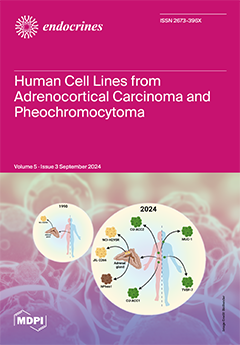This study investigated the impact of intensive endurance exercise on circulating androgenic steroid hormones in women. Fifteen normally menstruating athletic women participated. They completed intensive endurance exercise (treadmill running) until volitional fatigue in their follicular phase, with blood samples collected at pre-exercise, volitional
[...] Read more.
This study investigated the impact of intensive endurance exercise on circulating androgenic steroid hormones in women. Fifteen normally menstruating athletic women participated. They completed intensive endurance exercise (treadmill running) until volitional fatigue in their follicular phase, with blood samples collected at pre-exercise, volitional fatigue, 90 min and 24 h into recovery. The steroid hormones (total, free testosterone, dehydroepiandrosterone [DHEA], and DHEA-sulfate [DHEA-S], cortisol) were analyzed in blood sera. Non-parametric statistics were used to assess changes across exercise and recovery. At volitional fatigue, all hormones, except free testosterone, were significantly (
p < 0.05) increased compared to pre-exercise levels. Most hormones remained elevated through 90 min of recovery, with DHEA, DHEA-S, and total testosterone changes being significant (
p < 0.05). At 24 h of recovery, hormonal levels were reduced; specifically, DHEA, DHEA-S, and total testosterone compared to baseline (
p < 0.01 to 0.06). Increases in cortisol levels at volitional fatigue and 90 min of recovery were correlated with reductions in total testosterone, DHEA, and DHEA-S observed at 24 h of recovery (
rho > −0.62,
p < 0.05). In conclusion, in menstruating women performing intensive endurance exercise during their follicular phase, their androgenic steroid hormones remain elevated during early recovery but are suppressed at 24 h of recovery. The latter finding indicates that establishing a resting endocrine equilibrium requires a longer recovery period than 24 h.
Full article




